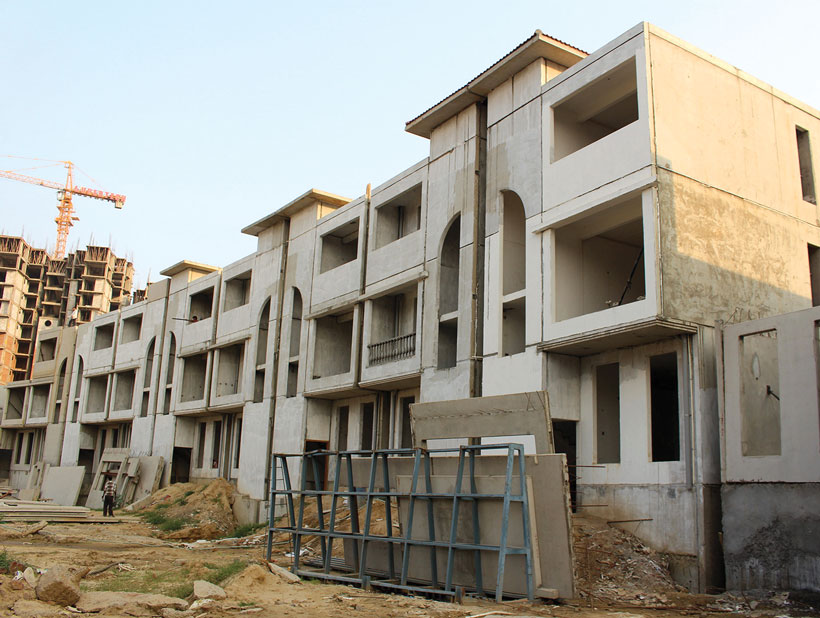India, a nation with a rapidly growing population and a burgeoning need for urban infrastructure, is witnessing a significant shift in construction methodologies. One of the most transformative trends is the adoption of precast construction. Precast concrete buildings in India are gaining popularity for their efficiency, sustainability, and durability. This article delves into the rise of precast construction in India, highlighting its benefits and the impact it has on the construction landscape.
What is Precast Construction?
Precast construction involves casting concrete elements in a controlled environment, typically at a factory, and then transporting these prefabricated elements to the construction site. These elements can include walls, floors, beams, and columns, which are assembled on-site to create a complete structure. This method contrasts with traditional construction, where concrete is poured and cured on-site.
Advantages of Precast Construction
1. Speed and Efficiency
One of the most significant advantages of precast construction is its speed. Since the elements are cast in a factory, the construction process is not affected by weather conditions, which can cause delays in traditional construction. Additionally, the on-site assembly is quicker, leading to shorter project timelines.
2. Quality and Durability
Precast concrete elements are manufactured in a controlled environment, ensuring consistent quality. The use of high-quality materials and precise production techniques results in highly durable structures that can withstand harsh environmental conditions.
3. Cost-Effectiveness
While the initial investment in precast construction may be higher, the overall cost is often lower due to reduced labor costs, shorter construction timelines, and minimized material wastage. The long-term maintenance costs are also lower, as precast structures are more durable and require less frequent repairs.
4. Sustainability
Precast construction is more sustainable than traditional methods. The controlled production environment reduces waste, and the use of precast elements minimizes the environmental impact of on-site construction activities. Additionally, precast concrete can incorporate recycled materials, further enhancing its sustainability.
The Growth of Precast Concrete Buildings in India
India's construction industry is experiencing a paradigm shift with the increasing adoption of precast concrete buildings. Several factors contribute to this growth:
1. Urbanization and Infrastructure Development
The rapid urbanization in India demands the swift construction of residential, commercial, and industrial buildings. Precast construction meets this need by offering faster project completion times without compromising on quality.
2. Government Initiatives
The Indian government is promoting the use of modern construction technologies, including precast construction, to address the country's housing shortage and infrastructure needs. Policies and incentives are in place to encourage the adoption of precast methods.
3. Innovative Projects
Numerous innovative projects in India showcase the potential of precast construction. From residential complexes and office buildings to bridges and metro rail projects, precast concrete is being used across various sectors, demonstrating its versatility and efficiency.
Case Studies
1. Residential Complexes
Precast concrete has been successfully used in several residential projects in cities like Mumbai, Bangalore, and Delhi. These projects have benefited from the speed and efficiency of precast construction, enabling timely delivery of housing units.
2. Commercial Buildings
Several commercial buildings in India are now leveraging precast construction for their structural components. The controlled manufacturing process ensures high-quality finishes and structural integrity, making it an ideal choice for office buildings and shopping malls.
3. Infrastructure Projects
Infrastructure projects, such as metro rail systems and flyovers, are increasingly using precast concrete elements. These projects benefit from the reduced construction time and enhanced durability of precast components, ensuring long-term performance and safety.
Challenges and Future Outlook
Despite its numerous advantages, precast construction faces some challenges in India. These include the need for significant initial investment, logistical challenges in transporting large precast elements, and the requirement for skilled labor for assembly.
However, the future of precast construction in India looks promising. With continued government support, advancements in technology, and growing awareness of its benefits, precast construction is set to play a pivotal role in shaping India's urban landscape.





Comments